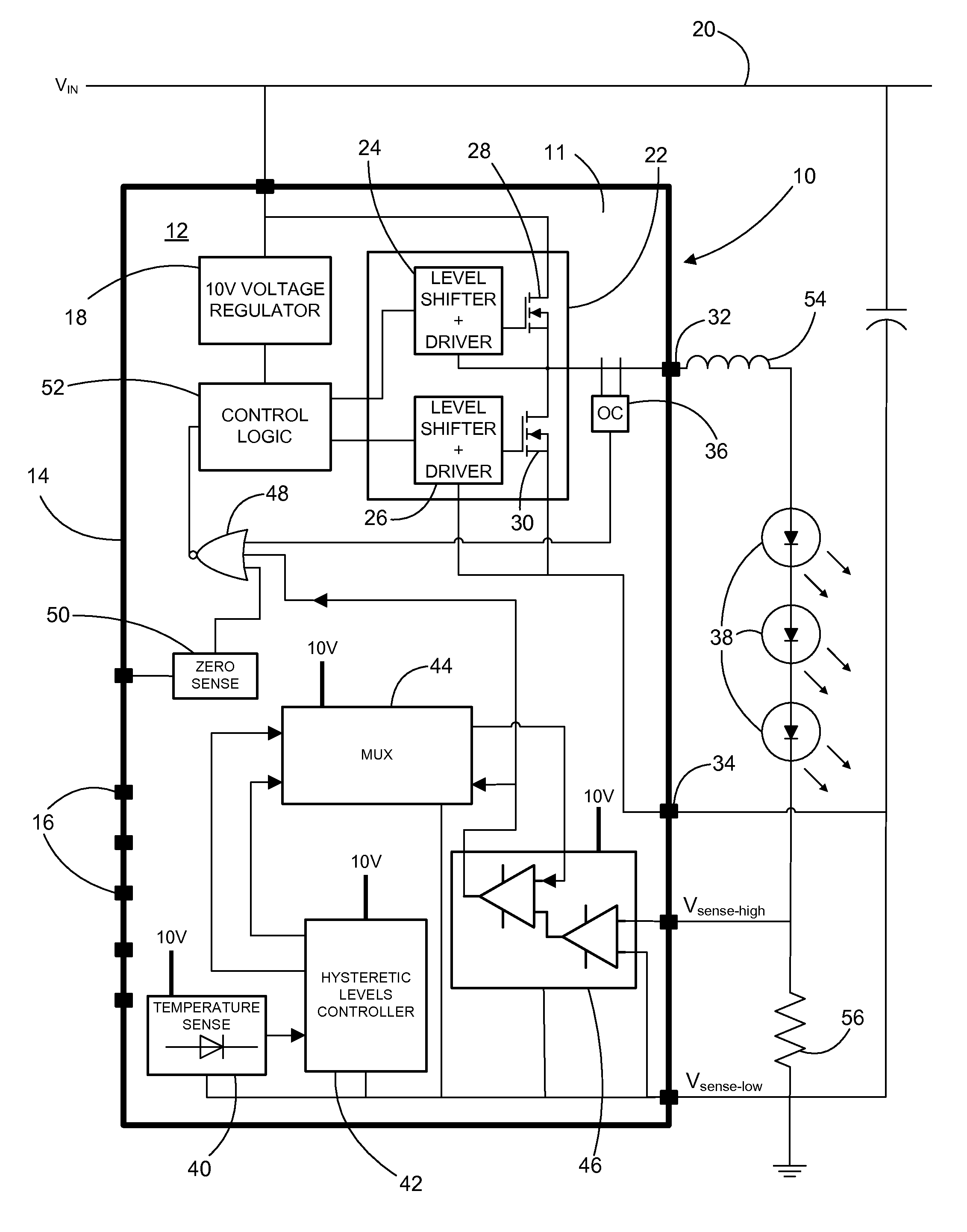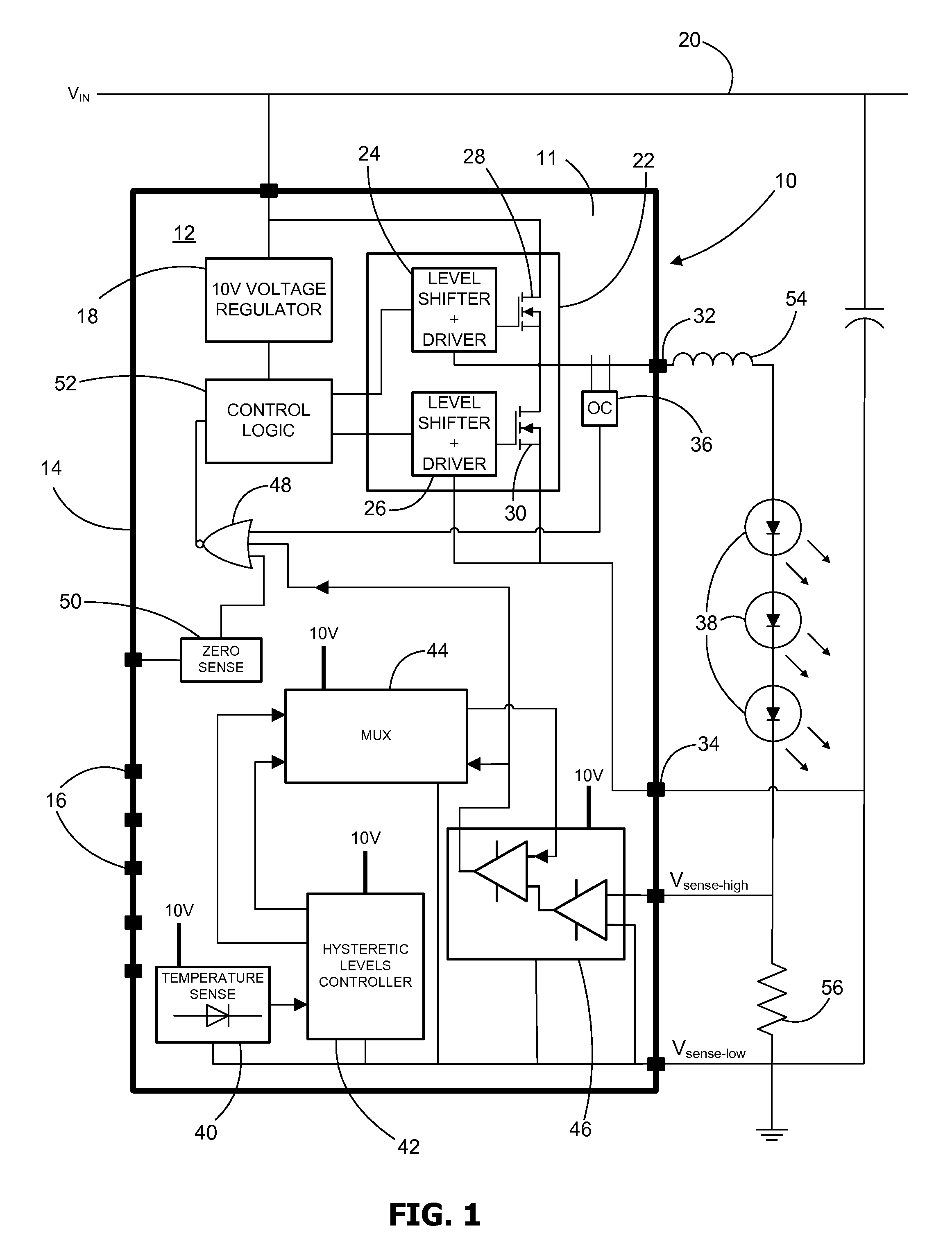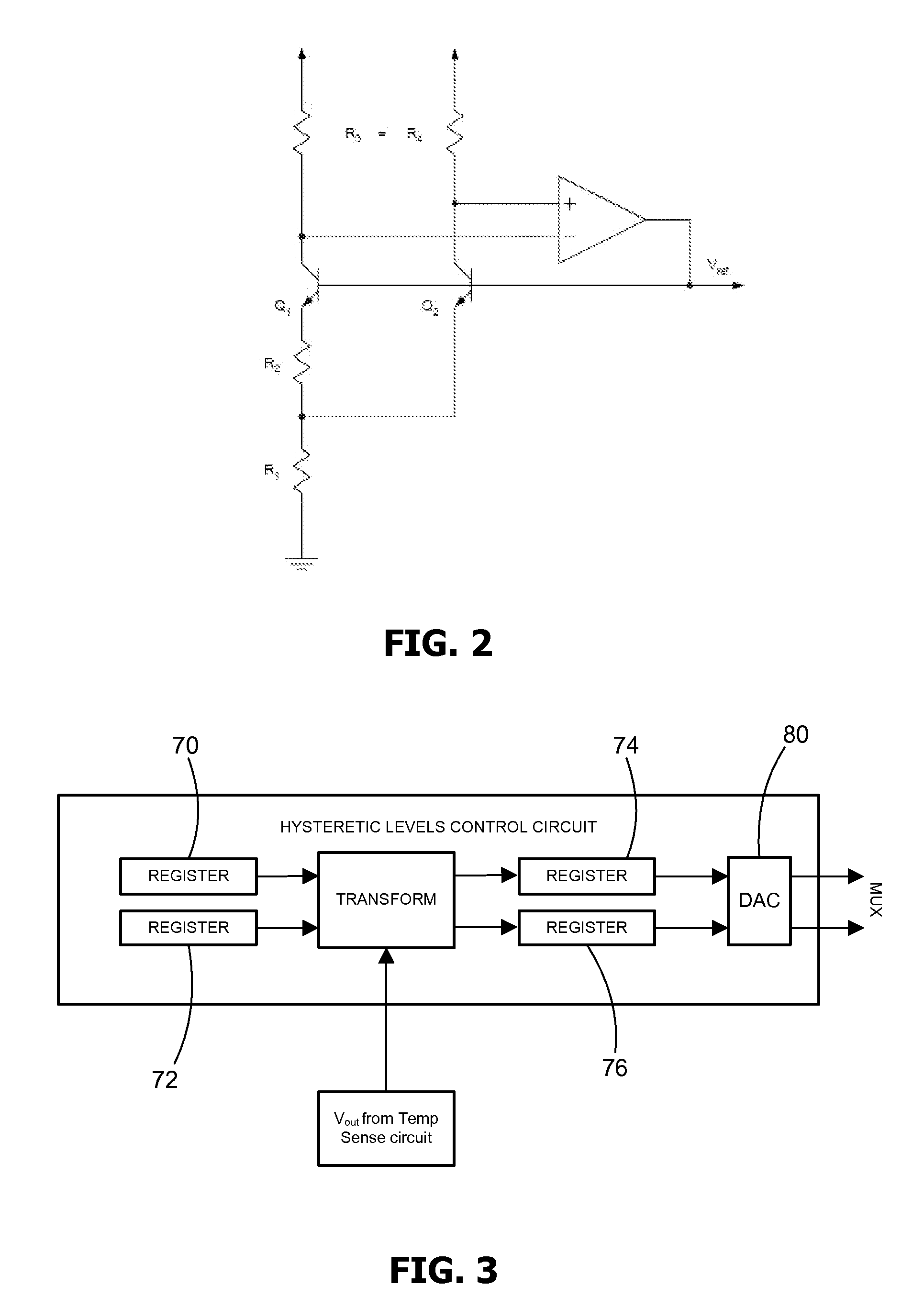Dc-dc converter
a converter and dc technology, applied in the direction of electric variable regulation, process and machine control, instruments, etc., can solve the problem of changing the brightness of the led(s), and achieve the effect of reducing the cost of the system, simplifying the task of the designer, and reducing the heat loss on the chip
- Summary
- Abstract
- Description
- Claims
- Application Information
AI Technical Summary
Benefits of technology
Problems solved by technology
Method used
Image
Examples
second embodiment
[0064]Referring to FIG. 6 an LED driver 90 according to the present invention is shown in a flyback converter configuration. Such a flyback converter might be useful LED lighting applications with optional dimming control for example. The LED driver 90 is shown connected to a mains supply 91 and comprises a dimmer circuit 92, a damping network 94, a full-wave rectifier circuit 96, a damping resistor 98, a bleeder transistor 100, a controller IC 102, a transformer 104 and one or more LED(s) 106. FIG. 7 shows a particular application employing the LED driver 90, with like numerals indicating like parts.
[0065]In use, rectified AC mains is input voltage to the controller IC 102 which in turn controls the switching of input voltage across the transformer 104. In particular, the controller IC 102 controls the primary side switching by turning on an off an integrated transistor. The LED(s) 106 is connected to the secondary side of the transformer 104, and is therefore isolated from the pri...
third embodiment
[0069]Referring to FIG. 10 an LED driver 120 according to the present invention is shown in a boost converter configuration. Such a boost converter might be useful for LED camera flash applications on mobile telephones for example. The LED driver 120 comprises an internal power supply 122 derived from a battery power supply 124. A switch mode power circuit 126 is controlled by a logic circuit 128 which in the embodiment comprises an I2C interface and control circuit. Two MOSFETs 130, 132 connected to and controlled by the switch mode power circuit 126, in order to apply current through one or two LEDs 134.
[0070]The same control concept as described above in connection with the second embodiment can also be applied to the boost converter. The control is again in the constant frequency and peak current mode. In particular assuming constant Vout, Iout is proportional to Iav*(1−DC)*frequency, where DC is the duty cycle. Therefore de-rating of Ipeak and switching frequency can be adjuste...
PUM
 Login to View More
Login to View More Abstract
Description
Claims
Application Information
 Login to View More
Login to View More - R&D
- Intellectual Property
- Life Sciences
- Materials
- Tech Scout
- Unparalleled Data Quality
- Higher Quality Content
- 60% Fewer Hallucinations
Browse by: Latest US Patents, China's latest patents, Technical Efficacy Thesaurus, Application Domain, Technology Topic, Popular Technical Reports.
© 2025 PatSnap. All rights reserved.Legal|Privacy policy|Modern Slavery Act Transparency Statement|Sitemap|About US| Contact US: help@patsnap.com



